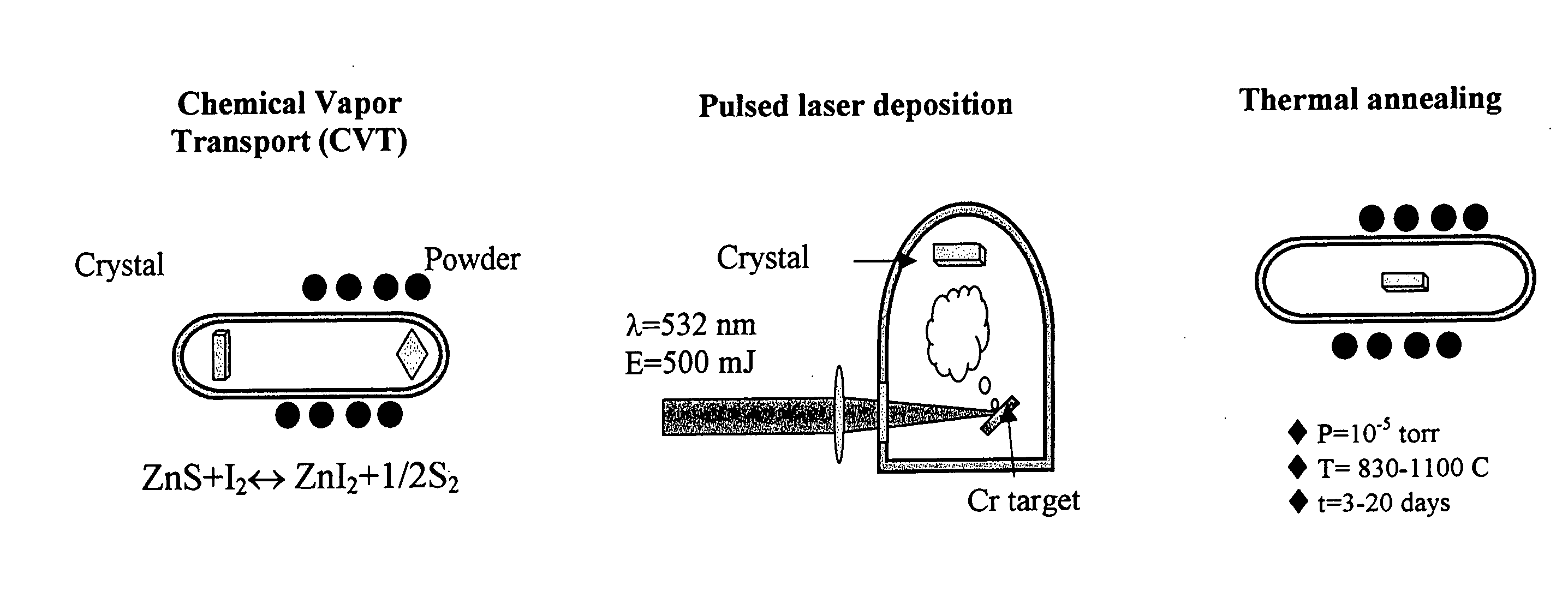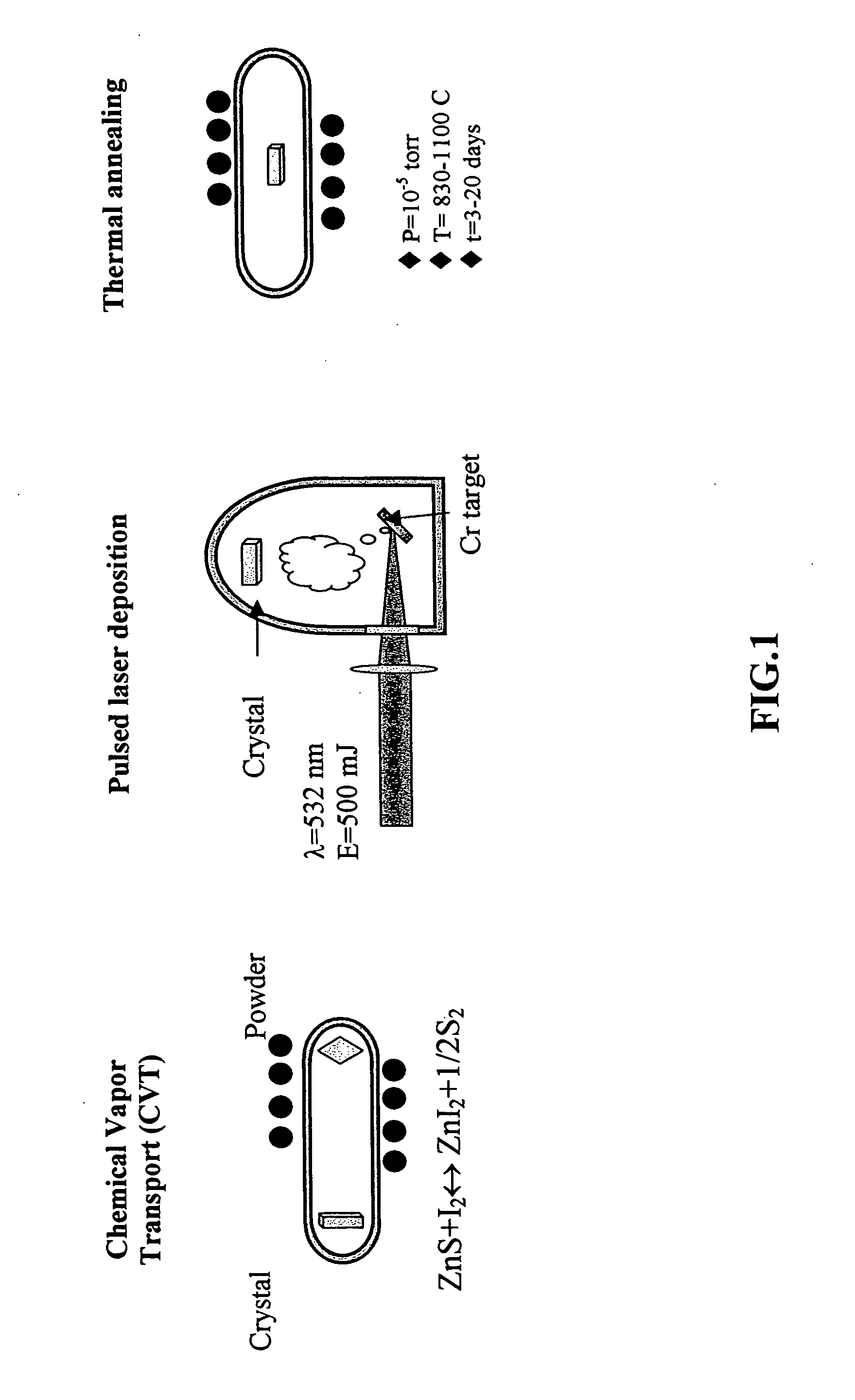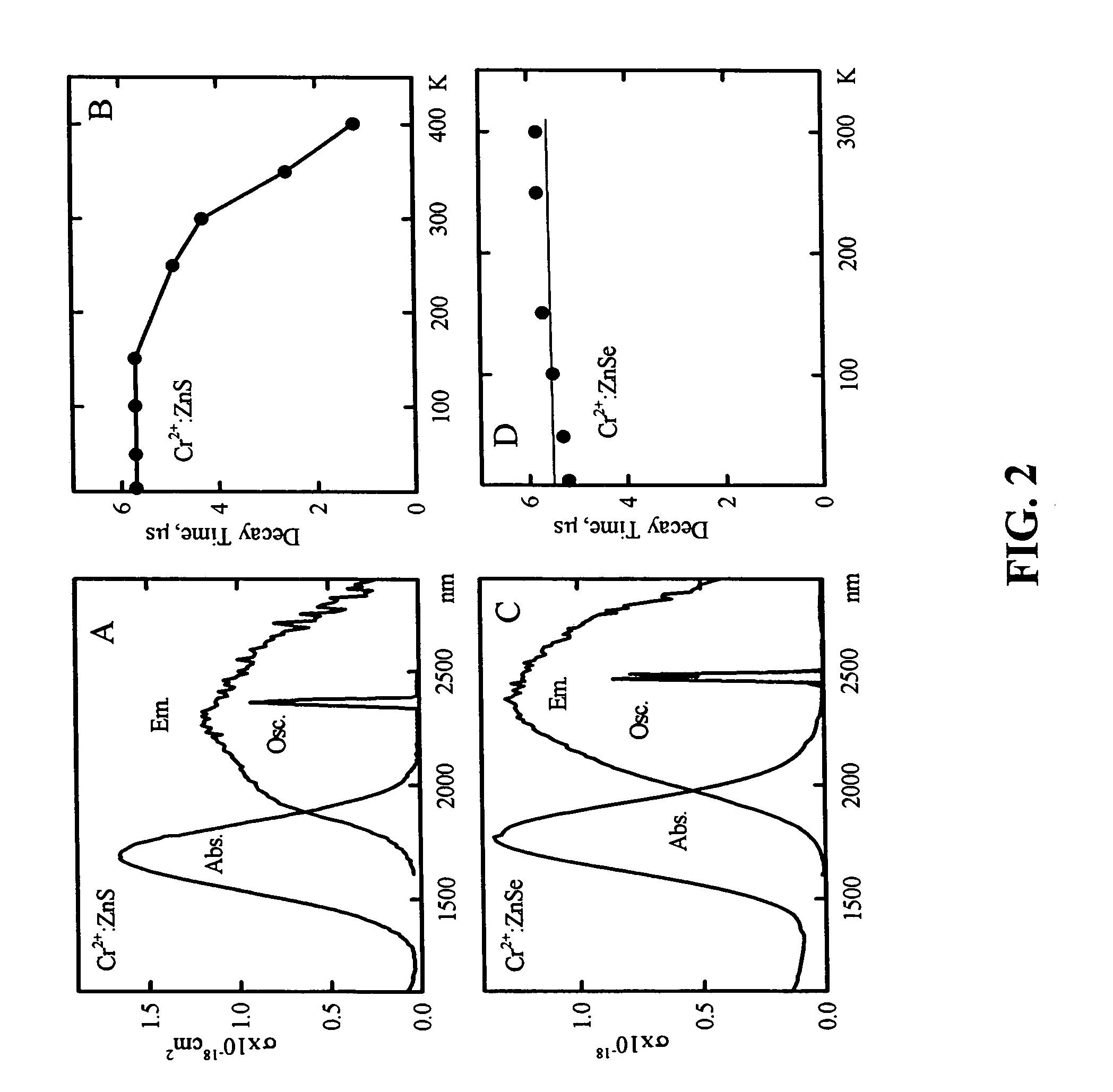Mid-IR microchip laser: ZnS:Cr2+ laser with saturable absorber material
a microchip and absorber material technology, applied in the field ofquantum electronics, can solve the problems of limiting the use of robust low-cost mid-, affecting the quantum efficiency of fluorescence at room temperature, and the source's output power is limited, so as to achieve low-cost mass production and good reproducibility and reliability. the effect of good
- Summary
- Abstract
- Description
- Claims
- Application Information
AI Technical Summary
Benefits of technology
Problems solved by technology
Method used
Image
Examples
Embodiment Construction
[0045] In the preferred embodiment, the Cr2+:ZnS crystals are prepared by a three-stage method according to a flow chart depicted in FIG. 1. At the first stage, undoped single crystals are synthesized by a chemical transport reaction from gas phase using an iodine gas transport scheme, preferably in a quartz tube 20mm in diameter and 200mm in length placed in a two heating zone furnace. Powder obtained by a joint ignition of initial components serves as raw material. Temperatures in the zones of raw material and crystallization are approximately 1200° C. and 1100° C. respectively. I2 concentration is in the range of 2-5 mg / cm3. High optical quality unoriented ingots, preferably Ø2×cm3, are cut and ground to slabs of 5×5×3 mm size.
[0046] At the second stage and third stages, introduction of chromium (or other transitional metal) into the crystalline host is performed by thermal diffusion (third stage) from a then film deposited, preferably, by the pulse laser deposition method (seco...
PUM
| Property | Measurement | Unit |
|---|---|---|
| thickness | aaaaa | aaaaa |
| concentration | aaaaa | aaaaa |
| size | aaaaa | aaaaa |
Abstract
Description
Claims
Application Information
 Login to View More
Login to View More - R&D
- Intellectual Property
- Life Sciences
- Materials
- Tech Scout
- Unparalleled Data Quality
- Higher Quality Content
- 60% Fewer Hallucinations
Browse by: Latest US Patents, China's latest patents, Technical Efficacy Thesaurus, Application Domain, Technology Topic, Popular Technical Reports.
© 2025 PatSnap. All rights reserved.Legal|Privacy policy|Modern Slavery Act Transparency Statement|Sitemap|About US| Contact US: help@patsnap.com



